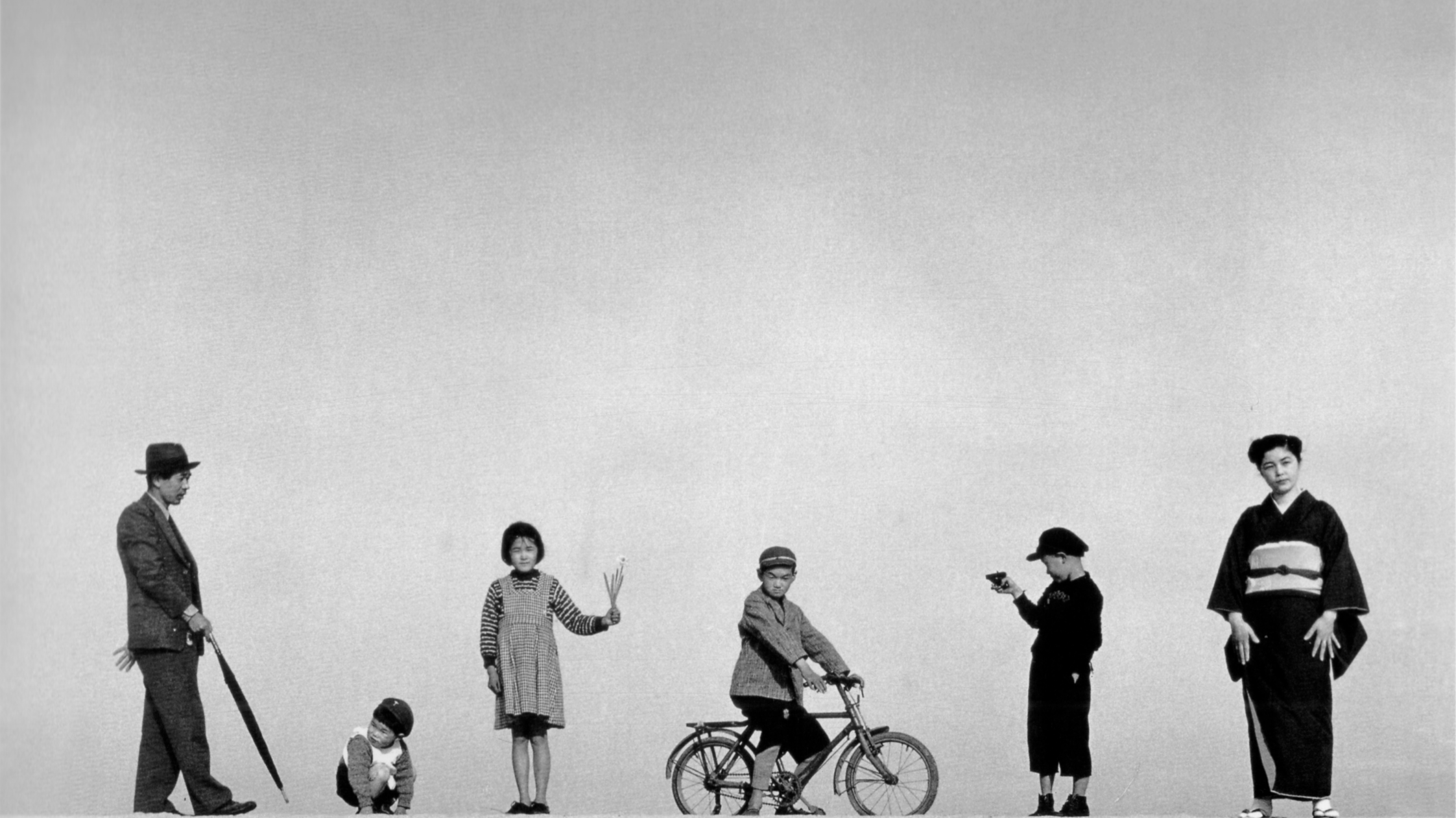Japanese Zen gardens, often referred to as Karesansui or Japanese rock gardens, represent a unique form of traditional Japanese landscaping. These gardens are designed to create serene and meditative spaces where visitors can appreciate the natural beauty of rocks, sand, and gravel arranged in elegant patterns that reflect the grandeur of nature. The design of a Japanese Zen garden is grounded in principles of simplicity, harmony, and balance, resulting in a tranquil and inspiring environment.
Today, Japanese Zen gardens are cherished across Japan and beyond for their minimalist beauty and calming effects. They have become a popular source of inspiration and study for artists, designers, and architects around the world. In this article, we will explore the rich history and cultural significance of Japanese Zen gardens, examining the key elements that contribute to their profound appeal and timeless elegance.
(Japanese Zen Gardens: Finding Tranquility in Dry Landscapes - dans le gris)
What is a Japanese Zen Garden?
The term "Karesansui" is often translated into English as a Japanese Zen garden. The root term from which "zen" is derived originally refers to a Sanskrit term that signifies "meditation." However, in Japanese, this type of garden is traditionally called "Karesansui," written as 枯山水, which translates to the characters for "dry," "mountain," and "water."
A Japanese Zen garden is a minimalist dry landscape consisting of natural elements such as rock, gravel, sand, and wood, with minimal plant life and no water. Instead of vibrant flowers and foliage, a Japanese Zen garden features a simple bed of raked gravel, punctuated by a few large rocks and typically enclosed by shrubs. This is why Japanese Zen gardens are often referred to as "dry" gardens, as they lack water features and usually have few plants.
(Japanese Zen Gardens: Finding Tranquility in Dry Landscapes - dans le gris)
(Japanese Zen Gardens: Finding Tranquility in Dry Landscapes - dans le gris)
Japanese Zen gardens originally consisted of dry landscapes where stones played a central role. According to the Association for Asian Studies, rocks are considered the bones of the earth and are essential to the essence of nature and reality. They represent unyielding mountains, while the sand in a Japanese Zen garden symbolizes the fluidity of water, creating a dualistic relationship of yin and yang. This is why Japanese Zen gardens are sometimes referred to as "rock gardens."
The primary purpose of Japanese Zen gardens was to provide a space for Buddhist monks to meditate and contemplate the teachings of the Buddha. Unlike traditional gardens, Japanese Zen gardens do not aim to stimulate the senses but rather to promote stillness in the viewer's mind. They are specifically designed for meditation and offer a peaceful, meditative environment for visitors, creating a calm and tranquil atmosphere for anyone who enters. The style of a Japanese Zen garden is simplistic and aims to evoke the greatest significance using minimum materials.
(Japanese Zen Gardens: Finding Tranquility in Dry Landscapes - dans le gris)
Meaning and Purpose of a Japanese Zen Garden
A Japanese Zen garden serves to create a harmonious balance between our fast-paced lifestyles and the natural world, both within and outside of a Buddhist temple or devout Buddhist Japanese household. The hope is that while in the landscape of a Japanese Zen garden, one's mind can find a peaceful sanctuary to rest and experience heightened awareness and emptiness. As the landscape shifts with the seasons, moss thrives, and water accumulates, our experience of the garden evolves as well. Therefore, a Japanese Zen garden can be regarded as a living work of art.
Japan's leading contemporary Zen garden designer, Masuno Shunmyo, an 18th-generation Zen monk, explains the connection between Zen and the arts: "Through Zen ascetic practice, an emotion of the mind is found that can't be directly exposed or understood."
(Japanese Zen Gardens: Finding Tranquility in Dry Landscapes - dans le gris)
Elements of a Japanese Zen Garden
Zen Buddhism is devoted to the exploration of nature and humanity's role in the world. Japanese Zen gardens embody this philosophy by creating peaceful and meditative spaces. While achieving enlightenment through Buddhist practices may take time, one can find solace in serene places that invigorate the soul. Among them, few places can rival the atmosphere of a Japanese Zen garden. These gardens typically consist of carefully chosen and arranged elements, including rocks, gravel or sand, and vegetation, each contributing to the all-embracing sense of balance, simplicity, and harmony.
(Japanese Zen Gardens: Finding Tranquility in Dry Landscapes - dans le gris)
Stones and Rocks
Rocks and stones play a crucial role in Japanese Zen gardens as they are pure elements, taken directly from nature. Japanese Zen gardens use rocks and stones to evoke a sense of timelessness and eternity. Large stones often mark the entrances to many gardens as a sign of welcome. Additionally, stones are incorporated into the water elements and can be used to form paths. When water is not available, sand or small white pebbles can be substituted to symbolize the space often held by water.
Furthermore, stones in a Japanese Zen garden invite us to contemplate the mysteries of existence and find peace in the present moment. Their presence encourages us to reflect on the impermanence of all things and our own place in the natural world. Through this contemplation, we may find a deeper sense of connection to the universe and a greater appreciation for the beauty and simplicity of life.
(Japanese Zen Gardens: Finding Tranquility in Dry Landscapes - dans le gris)
Water
Water is one of the most essential elements for life, and its presence in Japanese Zen gardens adds depth and significance to the space. It is not only used to represent the vastness of the ocean or the flow of a river but also to symbolize purification and cleansing. In the stillness of a Japanese Zen garden, water creates a serene and calming atmosphere, inviting visitors to pause and reflect. The sound of trickling water and the reflection of surrounding stones and plants create a mesmerizing effect, further enhancing the meditative experience. As one walks beside a pond or sits by its edge, the emptiness and tranquility of the surroundings encourage deep introspection and contemplation. This connection with nature and the inner self is at the heart of the Japanese Zen garden experience, reminding us of the profound beauty and wisdom that exist in the world around us.
(Japanese Zen Gardens: Finding Tranquility in Dry Landscapes - dans le gris)
Sand or Gravel
One of the most prominent features of Japanese Zen gardens is the use of sand or gravel, which is carefully raked to create intricate patterns resembling water ripples or waves. The gravel used in Japanese Zen gardens is known as "suna" (砂: sand), even though the individual particles are much larger than those of regular sand. Gravel is usually preferred over sand in Japanese Zen gardens because it is less disturbed by rain and wind.
These lines drawn in the white sand are called "samon" (砂紋), and they can represent not only calm streams but also larger waves, undulations, checkered patterns, as well as swirling patterns symbolizing enlightenment, psychology, worldview, and the universe. The delicate expression of these sand patterns is a testament to the Japanese people's sensitivity to beauty, conveying the simple, quiet, pure, and transparent beauty of Wabi Sabi.
(Japanese Zen Gardens: Finding Tranquility in Dry Landscapes - dans le gris)
Image courtesy of The Japanese Garden by Sophie Walker.
(Japanese Zen Gardens: Finding Tranquility in Dry Landscapes - dans le gris)
Cleaning the samon is considered an act of purifying the mind, and monks who study Zen use brooms or rakes to carefully groom them. Overall, the use of sand and gravel patterns in Japanese Zen gardens reflects the importance of tranquility, simplicity, and the appreciation of beauty in Japanese culture.
(Japanese Zen Gardens: Finding Tranquility in Dry Landscapes - dans le gris)
Moss
During the Heian period (794–1185), Japanese aristocrats appreciated the beauty of moss, but it was not until the proliferation of Zen culture in the 14th century that it became a highly valued element in gardening. Zen Buddhist monks found serenity in moss, and over the subsequent centuries, garden designers used it to create memorable landscapes.
As a result, moss has become an integral feature in many Japanese gardens, carrying special meaning and significance. In a Japanese Zen garden, moss is often used as a ground cover to create a lush, green carpet that contrasts with the gravel or sand used to represent water or land. Moss symbolizes age and tradition, as it often grows in ancient forests and on old buildings.
(Japanese Zen Gardens: Finding Tranquility in Dry Landscapes - dans le gris)
History of Japanese Zen Garden
Japanese Zen gardens have a long and rich history that dates back to ancient Japan. The origins of the Japanese Zen garden can be traced to the 6th century when Chinese monks traveled to Japan and introduced the principles of Buddhism. Over the years, the teachings of Buddhism and the practice of Japanese Zen gardening became closely connected, eventually becoming a fundamental aspect of Japanese culture.
The practice of creating Japanese Zen gardens emerged in Japan during the 8th century CE, inspired by the principles of Chinese garden philosophy from the Song dynasty. The arrangement of rocks and other elements in the gardens was influenced by a mythical view of Mount Penglai, believed to be the home of the legendary Eight Immortals in Chinese mythology and known as Horai in Japanese.
(Japanese Zen Gardens: Finding Tranquility in Dry Landscapes - dans le gris)
Heian period (794-1185)
The oldest Japanese gardening book, "Sakuteiki(作庭記)," which was written in the late Heian period, contains the following description about "Karesansui" (Japanese Zen Garden):
"In a place without a pond or stream, stones can be arranged. This is called Karesansui. The arrangement of the stones includes making a small mountain or creating ridges, onto which the stones are then placed."
The "Karesansui" described in "Sakuteiki" refers to the placement of stones and rocks in one section of the garden, and it is believed to be the prototype of what is now known as the "Heian-style Karesansui" or "Early-style Karesansui." However, it should be noted that Zen Buddhism had not yet spread widely during the Heian period, so the appearance of Karesansui at that time was likely different from what we see in modern times.
(Japanese Zen Gardens: Finding Tranquility in Dry Landscapes - dans le gris)
Kamakura period (1336-1392)
During the Kamakura period, Zen Buddhism was introduced from China and began to spread widely in Japan. The first Zen gardens were built at Buddhist temples, which were used as places of worship and meditation. The Rinzai Zen Buddhist monk and Teacher Muso Soseki played a significant role in the development of these gardens.
Muso Soseki was invited to the western part of Kyoto to help restore the temple, which was previously a Pure Land Buddhist temple called Saihoji. The temple had been damaged during a war, and Muso Soseki was asked to rebuild it as a Zen temple. While restoring the temple, he created the first Japanese Zen garden, intending to provide a peaceful and contemplative space for the monks to focus on their spiritual practice. Initially, Japanese Zen gardens were small, simple, and made only of sand and stones.
(Japanese Zen Gardens: Finding Tranquility in Dry Landscapes - dans le gris)
Muromachi period (1336-1573)
During the Muromachi period, Japanese Zen gardens reached the height of their popularity. After the Onin War (1467), Kyoto was left devastated, and the Karesansui style of Japanese Zen garden, which could be constructed on a smaller budget and in a narrower space, gained popularity. Furthermore, as Zen Buddhism became more widely practiced, Japanese Zen gardens began to serve as a meditation spot not only for monks but also for the general public, including samurai and commoners. This led to the further development and expansion of these gardens.
(Japanese Zen Gardens: Finding Tranquility in Dry Landscapes - dans le gris)
Edo period (1603-1868)
During the Edo period, Japan experienced a decline in Japanese Zen gardens as a whole. The economy stabilized, and wealth began to accumulate under the powerful daimyo and merchants. Consequently, wealthy daimyo started to spend money lavishly on large-scale recreational gardens, known as "daimyo gardens (大名庭園)." The small and highly philosophical Japanese Zen gardens, which expressed a deep sense of harmony with nature, became less prominent during this transitional period. However, it was during this time that Kobori Enshu, a prominent tea master and garden designer, played a significant role in preserving and refining several Japanese Zen gardens, including the famous Daisen-in temple garden in Kyoto.
(Japanese Zen Gardens: Finding Tranquility in Dry Landscapes - dans le gris)
Showa period (1926-1989) until Today
During the Edo period, the popularity of Japanese Zen gardens declined, but they were later revived in the Showa period. A Japanese landscape architect named Mirei Shigemori, who aimed for 'eternal modernity' that would never fade, was instrumental in this revival. Shigemori created numerous Japanese Zen gardens during this time with the intention of bringing new life to the traditional Japanese garden while still retaining its original essence. Today, Japanese Zen gardens can be found throughout Japan, and they continue to be a source of inspiration and contemplation for people all over the world.
(Japanese Zen Gardens: Finding Tranquility in Dry Landscapes - dans le gris)
Recommended Reading on Japanese Zen Gardens
If you’re interested in Japanese Zen gardens and wish to learn more about them, we have curated a selection of recommended books. These recommendations offer insightful perspectives and beautiful imagery to enhance your understanding and appreciation of Japanese Zen gardens.
(Japanese Zen Gardens: Finding Tranquility in Dry Landscapes - dans le gris)
The Japanese Garden

In this insightful book, author and garden designer Sophie Walker delves deeply into Japanese gardens through a series of essays and a showcase of 100 featured Japanese gardens. She explores their historical evolution, cultural significance, and guiding principles. Enhanced with stunning photography and detailed explanations, this book is an invaluable resource for anyone interested in Japanese gardening. (Learn more)
(Japanese Zen Gardens: Finding Tranquility in Dry Landscapes - dans le gris)
The Modern Japanese Garden

This book is the first to showcase contemporary Japanese gardens, presenting innovative designs that resonate with readers regardless of their location. Featuring many gardens previously unseen in the West, it highlights experimental designs such as a water garden with glass rocks, a mountain garden with kinetic rods, a house with a vegetable roof, a mist-emitting rock plaza, and a Zen garden inside an inclined tube. This book is an essential read for those seeking ideas for modern Japanese Zen gardens. (Learn more)
(Japanese Zen Gardens: Finding Tranquility in Dry Landscapes - dans le gris)
Inside Your Japanese Garden: A Guide to Creating a Unique Japanese Garden for Your Home

The book includes detailed instructions on working with materials like stone, mud, and bamboo, and features a catalog of 94 plant varieties used in the showcased gardens. Author Sadao Yasumoro presents 20 gardens he has designed and built in Japan, including notable public spaces such as the Visvim shop and Yushima Tenjin in Tokyo. This book offers inspiration and practical guidance for creating your own Japanese Zen garden. (Learn more)
(Japanese Zen Gardens: Finding Tranquility in Dry Landscapes - dans le gris)
Read More Art Articles:
• Kintsugi: Finding Beauty in the Art of Repair
• Ikebana: The Art of Japanese Flower Arrangements
• What is Wabi Sabi? Embracing the Beauty of Imperfection
• Noh Masks: The Hidden Stories of Japanese Theatre Masks
(Japanese Zen Gardens: Finding Tranquility in Dry Landscapes - dans le gris)
About Us
Dans Le Gris is a brand that started with everyday jewelry; each handmade piece is designed and crafted in Taiwan. We deeply value every detail, dedicating ourselves to creating enduring pieces through collaboration with experienced craftsmen.
(Japanese Zen Gardens: Finding Tranquility in Dry Landscapes - dans le gris)
In our journal, we provide irregular updates featuring articles about art, culture, and design. We aspire to furnish our readers with profound insights and inspiration across a broad array of creative subjects. From the daily inspirations found in art and design to the timeless beauty of traditional craftsmanship and philosophy, our curated content encompasses diverse aspects of life. We hope you enjoy our content, and thank you for being here.






